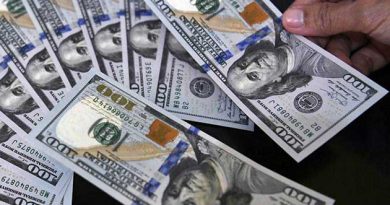Fight for American Oil to Heat Up as U.S. Keeps More for Itself

The U.S. is set to get a bit more possessive about its own oil, sparking a bidding war with eager buyers in the other side of the world.
Asian refiners from China to Taiwan and Thailand have boosted purchases of American crude in recent months because it was increasingly turning cheap relative to supplies from other parts of the globe. They’re now about to face stiffer competition as the U.S.’s own demand rebounds, with domestic refineries restarting after spring maintenance, according to industry consultant Energy Aspects Ltd.
“There will be a tug of war between U.S. domestic demand and international markets,” said Virendra Chauhan, a Singapore-based analyst at Energy Aspects. “That’ll determine how much American crude will flow to Asia in the coming months.”
While more than 1 million barrels a day of refining capacity in the U.S. was offline during May, only less than 200,000 barrels a day will be affected over the following three months as plants pump out fuel to meet demand during the summer driving season, according to the consultant. Crude volumes going into American refineries have also risen in recent weeks, data compiled from the Department of Energy show.
Higher intake by domestic plants will contribute to limiting the availability of cargoes for export even as pipeline bottlenecks pose hurdles for transporting all of the oil pumped inland to U.S. Gulf Coast terminals — an infrastructure headache that Citigroup Inc. and Energy Aspects see lasting until at least mid-2019.
That means, in the coming months, the likes of Taiwan’s CPC Corp. and China’s Unipec are unlikely to enjoy the price advantages that had spurred them to buy millions of barrels of U.S. crude recently, according to Chauhan.
Buying Spree
CPC joined Unipec — the trading unit of China’s state refining giant Sinopec — as one of Asia’s top buyers of U.S. crude last month after it purchased as much as 7 million barrels of WTI Midland for loading in July. That’s the equivalent to 225,000 barrels per day, or almost half of the Taiwanese refiner’s total nameplate capacity at its domestic plants.
The company was said to have bought the crude at a premium of about $1 a barrel over London’s Dated Brent benchmark, including freight costs for shipping the supply from the U.S. to Taiwan, a journey of more than 13,000 nautical miles lasting almost two months. That pricing level for the American oil is attractive relative to similar grades with lower sulfur levels such as Abu Dhabi’s Murban and Arab Extra Light from Saudi Arabia, according to Chauhan.
In the most recently announced official prices, Saudi Arabia’s state-run oil producer, known as Aramco, set the differential for Extra Light sold to Asia at almost $3 a barrel higher than for the same period last year, as did Abu Dhabi National Oil Co. for Murban crude.
Crude Flow
Even as the wide spread between West Texas Intermediate and other global benchmarks continues to support the sale of U.S. oil to Asia on paper, the actual flow of physical cargoes that take advantage of arbitrage opportunities is at risk as American refiners bid barrels away from export markets, according to Chauhan. It may also prove a potentially hindrance for a move by China to import more American crude.
“Asia has been importing an increasing amount of oil from the U.S. since early this year, but the tide may start to turn,” said Chauhan.
Exports of U.S. oil have surged since a 40-year export ban was lifted in late 2015, with volumes hitting a record 2.57 million barrels per day in early May.
courtesy : Bloomberg
photo : dbsuriname.com
[social_warfare buttons=”Facebook,Pinterest,LinkedIn,Twitter,Total”]



